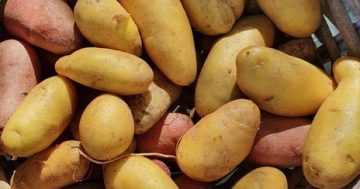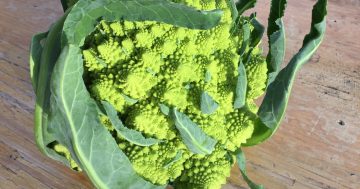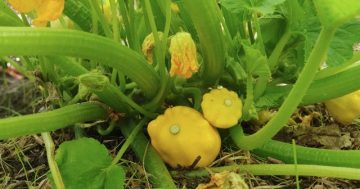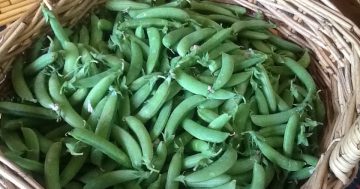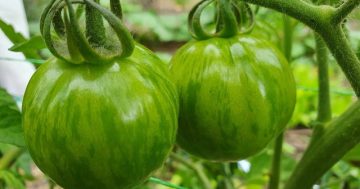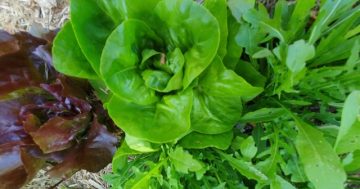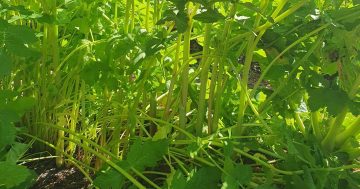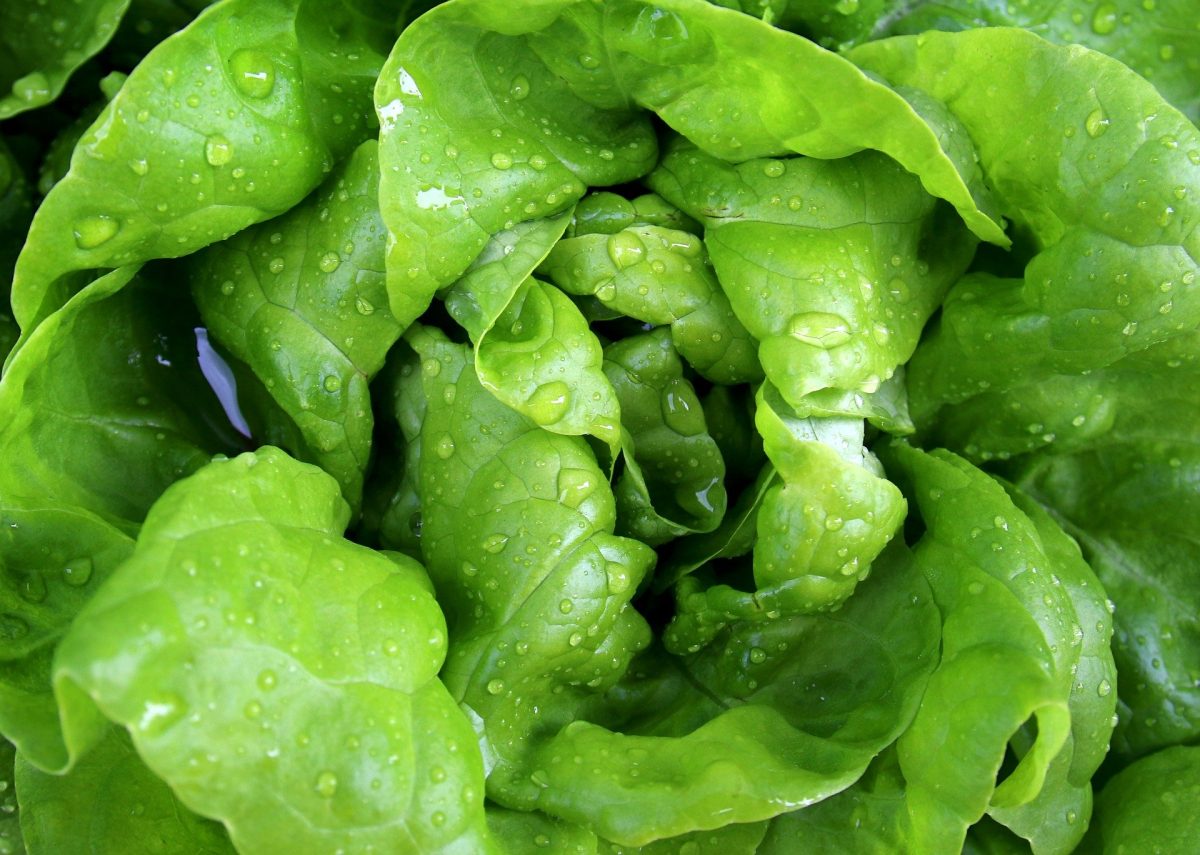
A warmer autumn is proving a boon for the vege garden. Photos: Supplied.
Warmer-than-usual days and nights are expected to continue as we move into the last month of autumn. The vegetable garden is set to thrive in this unexpected little bit of warmth.
With soil temperatures still in the higher range, we have a small window to continue planting all the lovely root vegetables. However, soil temperatures at 11 degrees or lower will see germination slow right down and carrots, parsnips and turnips will take weeks to germinate so it may now be better to wait until spring now.
Everything that is already growing in the garden will have enjoyed the lovely weather through April and should also benefit from the slightly warmer day and night temperatures that are expected through May.
Some locations across the Canberra region have already experienced a few light frosts. If you have not already put in place some frost protection, definitely do so now.
One downside of this slightly milder weather is that there are still a few cabbage butterflies around laying eggs and producing caterpillars. Continue with caterpillar inspection over the next few weeks. Also, keep an eye out for aphids. Aphids have had millions of years of evolution to learn to survive just about any weather, and will still infiltrate winter lettuces and large brassicas without much effort.
Be vigilant about slugs and snails, too. They just love a little cool, moist weather. To reduce their numbers, try a snail bait using chelated iron. There are a few such products on the market now; the benefit is that these are not harmful to other creatures.
Many of us cool-climate growers had better luck with pumpkins this year than in the two previous years when rain and cool summers hampered female flower emergence and fruit ripening. If you are lucky enough to have pumpkins, especially the thicker-skinned winter pumpkins like Queensland Blue, Jarrahdale, Masque de Provence or Australian Butter, it is worth preparing them for storage so you can continue enjoying them well into winter.
Curing involves subjecting the pumpkin to warm temperatures above 25 degrees for about five to 10 days. We built a hot box out of old windows in a sunny spot. Daytime temperatures in the box can get up to 30 degrees. In the evening, the windows let the heat escape ensuring pumpkins get a bit of a chill as the nights get colder.
This allows the ripe pumpkins to cure for best storage and the nearly ripe to continue their ripening over the next few months in storage.
After curing, the pumpkins should be kept in a cool, dry, frost-free place. Just make sure to get them inside before they are covered in frost.
The last month of autumn is starting to be a bit late to plant broad beans as they germinate best in soil temps above 14 degrees. However, if you have not planted any yet, do so now as this is the last chance.
Another interesting option for autumn is to plant peas for pea shoots. Peas planted now will grow well but flowers will be destroyed by frost. Pea shoots can be used fresh in salads, or traditionally in stir-fry. The entire pea plant is edible and delicious when they are young. The pea shoots are not just tender but also crisp and tasty.
Also, if you haven’t got your garlic in yet, plant it now! Early May is not too late for turbans and other early season garlics to go in. May, however, is the time to plant mid-season garlic.
Other vegetables to plant at this time of year include a range of leafy green vegetables. Rocket, for example, germinate at low temperatures and will grow over winter exposed to the elements, but they do best when grown under frost protection fabric. Rocket may take up to 12 days to germinate depending on soil temperature and six to eight weeks to be harvestable.
The benefit is that the leafy stalks can be cut and eaten while very young or as older leaves, depending on your preference. Older leaves tend to be very peppery compared to their younger counterparts.
Brassicas and Asian greens can all be planted now and are best planted as seedlings. Planting seedlings will give your vegetables a six to eight week start. Brassicas already growing now can do with a bit of maintenance, as can other vegetables that will stay in the ground for a few months. Removing yellowing, dead or diseased leaves can slow the spread of moulds and increase air circulation in the garden.
Also, most plants coming into winter can do with a loading of compost (where easy to apply) along with a good dose of a complete fertiliser. As for mulch, it is going to be hard to decide whether or not to mulch this season.
The BoM is suggesting rainfall may be lower than normal for our region and conserving moisture may be a priority for you, which can make a little mulch desirable. However, it is important to remember that mulch keeps soil cooler by retarding the heating of the soil by the sun and reduces soil temperatures which slows down plant growth and microbial activity. This is why mulching is often not recommended through winter in cold climates.
Bronwyn Richards and Helen Lynch run Wynlen House Artisan Village Farm and Learning Centre, a small village organic market garden in Braidwood, NSW. Since 2006 they have grown and sold fresh vegetables, eggs, preserves and garlic, and teach others to do the same.
Original Article published by Helen Lynch on Riotact.







